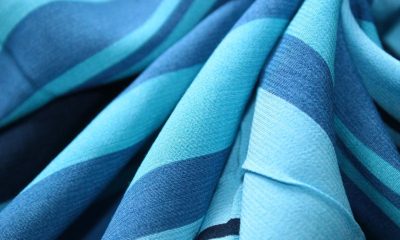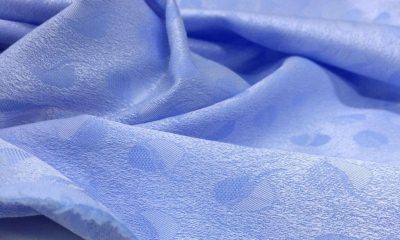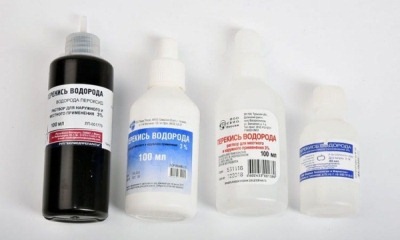We "tame" capricious material: how to wash viscose by hand and in a typewriter?
 Viscose clothing has many advantages: it is light, pleasant to the body and wears well.
Viscose clothing has many advantages: it is light, pleasant to the body and wears well.
There are many options for viscose fabric, differing in texture and density. But they are all delicate fabrics that need to be washed subject to a number of conditions.
Is it possible and how to wash viscose in a washing machine, at what temperature, does the fabric shrink or stretch after washing in hot water? You will find answers to these and other questions in the article.
Content
Is it possible?
 Viscose is produced by processing natural cellulose... The fabric itself does not have resistance to creasing, and in a wet state it also loses strength.
Viscose is produced by processing natural cellulose... The fabric itself does not have resistance to creasing, and in a wet state it also loses strength.
Industrial additional processing of the material significantly reduces such manifestations, but does not completely eliminate them.
Viscose can be a part of blended fabrics. Viscose clothes are mostly lightweight, wearable, requiring regular washing. If improperly processed, they are easily deformed. And when washed in hot water, they shrink.
Preparation for the process
At the stage of preparation for washing, you should:
- examine the label for the product;
- check pockets, remove all unnecessary from them;
- fasten all fasteners;
- turn the thing to the wrong side.
Mode and spin
Like other delicate materials, viscose erased in one of the modes:
- "delicate";
- "handwash".
At what temperature, by what means?
 The fragility of viscose fabric imposes restrictions not only on the intensity of processing, but also on the temperature of water heating. Maximum allowable - + 30 ° С... If the water is hot, things will shrink.
The fragility of viscose fabric imposes restrictions not only on the intensity of processing, but also on the temperature of water heating. Maximum allowable - + 30 ° С... If the water is hot, things will shrink.
There are a number of factors to consider when choosing a detergent. Among them is a limitation on water temperature. This is important as some detergents only work well at higher temperatures.
It is best to use those designed for delicate fabrics. Gel form is preferred over powder... The use of detergents and gels that are not designed for delicate materials can damage your clothes.
Using fabric softener for the last rinse will soften the garment.
Handwash
Hand processing is the best option for caring for delicate items. If possible, then the use of this method will significantly extend the period of things.
For completely manual processing, the washing procedure should be as follows:
- Pour water into the basin with a temperature not higher than + 30 ° C.
- Dissolve the detergent.
- Submerge clothes in a basin.
- Leave on for 30 minutes.
- Wash gently - not rubbing, but massaging.
- Rinse - in several water changes or under a running stream.
Pre-soaking is not a necessary washing step and should only be used if the garments are heavily soiled.
In the washing machine
Machine wash viscose allows you to tidy up and freshen up your garment effortlessly. So that the product itself is not damaged and retains its appearance, you need to carefully set all the settings.
Procedure:
 Prepare the things themselves.
Prepare the things themselves.- Fold the viscose products into the drum of the machine.
- Pour the detergent into the special compartment on the machine.
- Set the mode "delicate" or "hand wash".
- Check that the temperature is not higher than + 30 ° C.
- Disable spin.
- Start washing.
After washing, all items must be immediately removed from the drum and sent to dry. Failure to do this will cause the fabric to wrinkle and develop an unpleasant stagnant odor.
The video will tell you how to wash viscose in a washing machine:
Does the fabric shrink and how to wash to shrink?
You can try to specially wash viscose clothes so that they shrink. But the result of such experiments is not guaranteed. This can be useful when washing blended items that tend to stretch when wet.
Using the property of viscose cloth to decrease in size when in contact with hot water, large items can be washed in water above + 30 ° C... To do this, hot water (+ 50 ° C) is collected in the basin and clothes are dipped. If the goal is only to reduce the size of the item, then the detergent need not be added.
When washing mixed fabrics in a machine, in order to shrink things, the composition of the fabrics should be taken into account:
| Fibers in the material that complement viscose | Procedure for reducing size |
| Cotton | Wash at high temperature. Squeeze out at medium speed. Dip in hot water with conditioner diluted in it for 10 minutes. Dry on a warm surface. |
| Synthetics | High temperature wash. Spin at high speeds. Submersion in very cold water. Gentle spin. |
| Wool | Washing at a high temperature (about + 50 ° C or even + 60 ° C). Spin at low speeds. Rinsing in cold water. Drying on a warm horizontal plane. |
How to stretch shrunken things?
The tendency to shrink makes viscose items extremely demanding to process. Clothes can sit easily if one of the following conditions is met:
- exposure to high temperatures or contrasting temperatures;
- low quality of the product itself;
- mixed composition of fabric, in which viscose is combined with other natural or artificial fibers, which tend to shrink;
- drying on a heating battery;
- washing with alkaline powders.
If the thing has sat down, you can try to stretch it in the following way:
 Pour water (3-5 liters) into the basin.
Pour water (3-5 liters) into the basin.- Pour in 1 tbsp. l. hydrogen peroxide.
- Stir.
- Dip a shrunken thing.
- Leave for a quarter of an hour.
- Take out, squeeze out the product.
- Put on yourself.
- Do not remove until clothing is dry.
You can stretch the item slightly by pulling it while it is still wet. Ironing a damp product will also help, slightly stretching the product in the desired direction using steam.
Drying and ironing rules
Drying viscose in the washing machine is prohibited. Also, do not hang products on heating devices and in the open sun.
You can speed up the drying process by placing another terry towel on top of the garment. It is gently pressed with your palms so that excess moisture is absorbed into the towel. After that, it is removed, allowing the viscose to dry further.
During the ironing process, you must act very carefully so as not to spoil the thing. Viscose follows iron, guided by the following principles:
- at the minimum heating temperature;
- from the seamy side;
- through additional fabric.
If not all of the dented areas have been spread out, the fabric should be moistened. Viscose cannot be steamed.
Recommendations
Keep viscose garments in excellent condition the following recommendations will help:
 Sorting viscose garments before washing is a prerequisite for successful processing.
Sorting viscose garments before washing is a prerequisite for successful processing.- The best way to machine wash is with a mesh bag.
- For dyeing viscose, dyes designed for processing natural linen and cotton can be used.
- The use of homemade recipes for washing is possible with reservations, since the use of vinegar, ammonia, medical alcohol and a number of other substances for processing viscose is unacceptable.
- Placement of viscose items in the washing machine drum together with coarse fabrics (jeans, jackets, etc.) is unacceptable.
- For bleaching, you can use oxygen-containing preparations approved for washing viscose.
- If the percentage of viscose in the mixed material is very small, the rules of care should be chosen in accordance with the type of the main canvas.
Conclusion
Viscose is not the most capricious material in processing, but there are certain difficulties with its washing.
To cope with the problem quickly and efficiently, while maintaining the appearance of the thing, you should adhere to the agreed rules, and do not experiment with detergents unsuitable for delicate fabrics.



